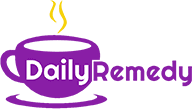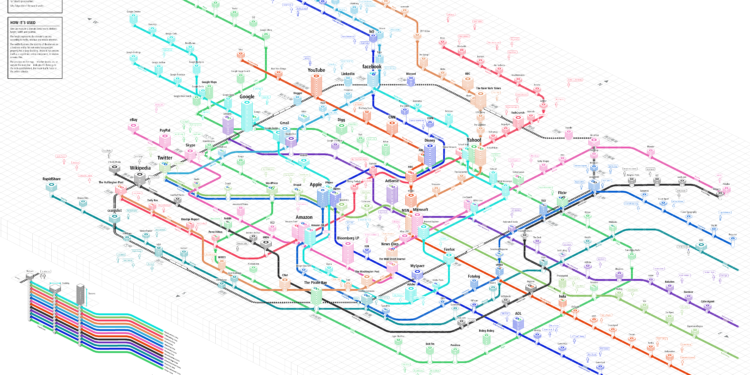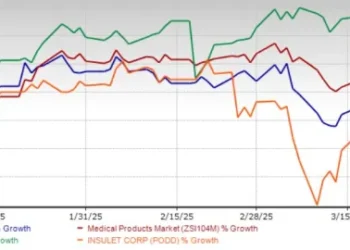If you want to understand where healthcare is going, start by asking what people are Googling.
That’s the philosophy behind Glimpse, a trend-spotting platform that tracks emerging topics based on rising search interest. Its latest report, “Healthcare Trends,” offers a real-time window into what the public is curious, confused, and concerned about — ranging from GLP-1 medications to mental health platforms to fertility planning services.
And while some trends seem predictable, others reveal surprising shifts in behavior, trust, and technology. What emerges isn’t just a catalog of keywords — it’s a reflection of how Americans are reimagining healthcare in 2025, one search at a time.
But can we really rely on search trends as a predictive model? And what does this growing dataset mean for providers, payers, and policymakers trying to keep pace?
Let’s unpack the model — and its implications.
From Clicks to Conclusions: How the Glimpse Model Works
Glimpse’s strength lies in its ability to track explosive growth in search terms over short periods. By monitoring millions of queries across platforms like Google and TikTok, the model identifies rising digital signals before they cross into mainstream awareness.
The healthcare section of Glimpse’s April 2025 report highlights trending topics such as:
- Weight loss injectables like Ozempic and Wegovy
- Online therapy services and AI-based mental health apps
- Fertility and egg freezing startups
- Teledermatology and skincare diagnostics
- Continuous glucose monitors (CGMs) for non-diabetics
At first glance, it reads like a who’s who of health-tech buzzwords. But when viewed collectively, these trends paint a cohesive narrative: consumers are no longer passive patients — they’re digital-first, outcome-oriented health consumers, searching for convenience, autonomy, and optimization.
A Mirror, Not a Crystal Ball
The question, of course, is whether this search-based model can predict actual clinical trends, or if it simply reflects a media-influenced curiosity.
For example, the spike in searches for Ozempic doesn’t necessarily mean everyone’s about to be on GLP-1s — but it does mean that the conversation around weight, metabolic health, and chronic disease management is evolving.
Similarly, rising interest in egg freezing might not translate to widespread adoption, but it signals a cultural normalization of fertility planning as part of personal wellness strategy.
In this way, the Glimpse model is more mirror than crystal ball — reflecting the questions people are brave enough to ask online before they ask them in a clinic. For marketers, this is gold. For policymakers and providers, it’s an early warning system.
What the Trends Tell Us About Patients in 2025
When interpreted thoughtfully, these trends hint at deeper societal shifts. Here are four narratives emerging from Glimpse’s data:
- Preventive Health Is Now Consumer-Led
People aren’t waiting for their doctor to bring up metabolic risk or reproductive health. They’re googling symptoms, comparing solutions, and purchasing diagnostics directly. The success of companies offering at-home lab tests and wellness-focused CGMs speaks to a new era of bio-individualized care, where users monitor health metrics like blood sugar and hormone levels not because they’re sick — but because they want to stay well.
- Therapy Is Tech-Based and On-Demand
Searches for online therapy and AI counseling platforms are soaring, a reflection of how mental health has become destigmatized and digitized. The traditional weekly office visit has given way to asynchronous messaging, AI-powered journaling tools, and algorithm-driven emotional support. It’s therapy not as treatment, but as a daily companion.
- Cosmetic and Wellness Dermatology Are Mainstream
From acne mapping apps to teledermatology consultations, Glimpse’s data shows that skincare is no longer vanity — it’s viewed as preventive medicine. Consumers are turning to TikTok and search engines to understand ingredient interactions, UV damage, and hormonal triggers — then seeking fast, app-based solutions.
- Weight Management Has Reentered the Mainstream — With Medical Backing
GLP-1s like Ozempic have become cultural phenomena, driven by celebrity endorsements and social media testimonials. While the public fascination is obvious, it also reopens long-suppressed conversations around obesity, insulin resistance, and food addiction. For better or worse, medicalized weight loss is now part of the wellness landscape.
The Risks of Reading Too Much Into the Trends
But for all its utility, the Glimpse model — and others like it — risks over-indexing on visibility rather than viability.
Searches may rise for reasons that don’t reflect behavior. A celebrity may mention egg freezing, causing a spike in searches, even if few follow through. A TikTok trend around glucose monitors might generate interest without influencing clinical standards.
Moreover, search trends may over-represent certain demographics — particularly younger, more digitally engaged users — leaving out critical populations like seniors, low-income groups, and rural communities.
If healthcare leaders aren’t careful, they could end up designing solutions for the most curious, not the most vulnerable.
The Future of Healthcare Is Behavioral, Not Just Clinical
What Glimpse gets right — and why its data matters — is that it taps into the behavioral side of healthcare, not just the clinical.
Understanding what people search reveals what they’re afraid to ask their doctor, what they think they can solve on their own, and where trust is shifting in real time.
That’s invaluable for health systems looking to:
- Improve patient engagement
- Design better digital front doors
- Tailor public health messaging
- Anticipate demand for emerging services
The long-tail keyword trend “healthcare based on patient search behavior” is itself becoming more prominent — a sign that even healthcare executives are recognizing the value of digital curiosity as a strategic input.
So, What Does This Mean for the Rest of 2025?
If Glimpse’s current trajectory holds, we can expect several developments to shape the healthcare ecosystem for the remainder of the year:
- Consumerization Will Deepen
Patients will act more like shoppers, comparing care options, reading reviews, and seeking immediate, app-based answers to personal health concerns. - Hybrid Models Will Proliferate
Clinics will integrate virtual-first solutions, from dermatology to mental health, meeting consumers where they already are — on their phones. - AI Will Shape the Frontline
Expect more AI symptom checkers, personalized health coaching bots, and predictive analytics embedded in consumer health platforms. - Search Behavior Will Inform Investment
Venture capital and private equity firms will increasingly use tools like Glimpse to forecast demand and identify investable niches. - Public Health Will Get More Personal
Instead of broad campaigns, expect micro-targeted health interventions based on search patterns, geolocation, and behavioral signals.
Final Thoughts
Search data is not a diagnosis, but it is a direction. It shows us where the public conversation is headed — what people hope for, fear, and wonder about when no one else is listening.
For healthcare leaders, understanding that digital behavior is a leading indicator of need may be the key to staying relevant, resilient, and responsive in 2025.
After all, the first step in seeking care isn’t booking an appointment anymore. It’s typing a question into a search bar.















